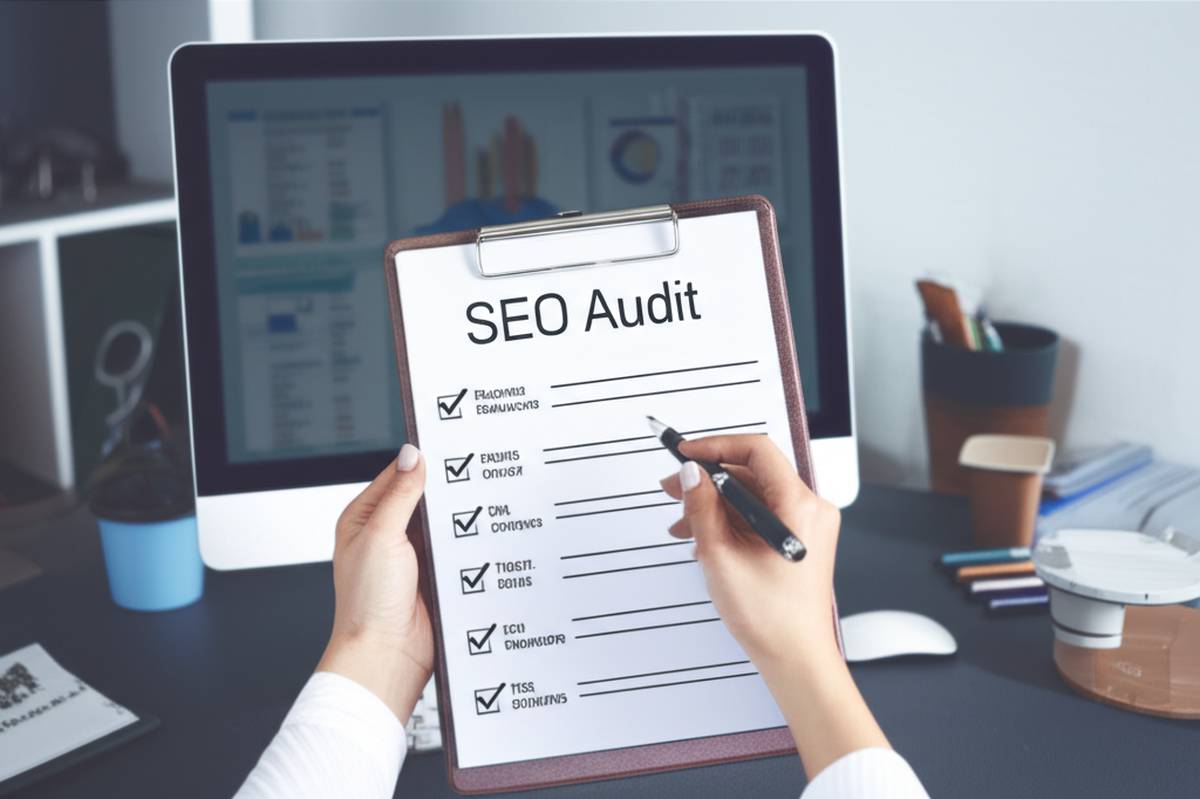In today’s competitive digital landscape, conducting a comprehensive SEO audit is essential for maintaining and improving your website’s search engine visibility. Whether you’re a business owner, digital marketer, or SEO professional, this detailed checklist will help you identify critical issues that could be hindering your website’s performance.
An effective SEO audit serves as the foundation for successful website optimization, revealing both technical problems and content opportunities that directly impact your search rankings and user experience.
Understanding the Importance of Regular SEO Audits
Search engines continuously update their algorithms, making regular SEO audits crucial for maintaining competitive rankings. A thorough audit examines every aspect of your website’s SEO health, from technical infrastructure to content quality and user experience factors.
Professional SEO audits typically uncover issues that can dramatically impact organic traffic, including broken links, duplicate content, slow page speeds, and mobile usability problems. Addressing these issues systematically can result in significant improvements in search visibility and website performance.
Technical SEO: The Foundation of Your Audit
1. Website Crawlability and Indexation
Begin your technical SEO assessment by verifying that search engines can properly crawl and index your website. Check your robots.txt file to ensure it’s not blocking important pages or resources. Use Google Search Console to identify crawl errors and indexation issues.
Examine your XML sitemap to confirm it’s properly formatted, up-to-date, and submitted to search engines. A well-structured sitemap helps search engines understand your website’s hierarchy and discover new content efficiently.
2. Site Speed and Core Web Vitals
Page speed directly impacts both user experience and search rankings. Analyze your website’s loading times using tools like Google PageSpeed Insights or GTmetrix. Focus on Core Web Vitals metrics: Largest Contentful Paint (LCP), First Input Delay (FID), and Cumulative Layout Shift (CLS).
Identify and address speed bottlenecks such as large image files, excessive JavaScript, or slow server response times. Implementing proper image compression, browser caching, and content delivery networks can significantly improve performance.
3. Mobile Responsiveness and Usability
With mobile-first indexing, ensuring your website performs flawlessly on mobile devices is non-negotiable. Test your website across various devices and screen sizes to identify responsive design issues.
Use Google’s Mobile-Friendly Test tool to assess mobile usability and identify specific problems such as text that’s too small, clickable elements that are too close together, or content that’s wider than the screen.
4. SSL Certificate and HTTPS Implementation
Verify that your website has a valid SSL certificate and that all pages load over HTTPS. Search engines favor secure websites, and users are increasingly cautious about entering personal information on non-secure sites.
Check for mixed content issues where HTTPS pages load HTTP resources, as this can trigger security warnings and negatively impact user trust and search rankings.
5. URL Structure and Redirect Analysis
Examine your website’s URL structure for SEO-friendly characteristics. URLs should be descriptive, include relevant keywords, and follow a logical hierarchy. Avoid using parameters, session IDs, or unnecessarily long URLs.
Conduct a comprehensive redirect analysis using a URL Redirect Checker to identify broken links, redirect chains, and redirect loops that can waste crawl budget and confuse search engines.
Content Quality and Optimization
6. Keyword Research and Content Alignment
Analyze your current keyword strategy and ensure your content aligns with user search intent. Use tools like a Keyword Extractor to identify relevant keywords and assess whether your content adequately targets these terms.
Evaluate keyword density and ensure natural integration of primary and secondary keywords throughout your content. Avoid keyword stuffing while maintaining topical relevance and semantic richness.
7. Title Tags and Meta Descriptions
Review all title tags to ensure they’re unique, descriptive, and contain target keywords. Title tags should be between 50-60 characters to avoid truncation in search results.
Examine meta descriptions for uniqueness and compelling calls-to-action. While meta descriptions don’t directly impact rankings, they significantly influence click-through rates from search results.
8. Header Structure and Content Hierarchy
Assess your content’s header structure (H1, H2, H3, etc.) to ensure proper hierarchy and keyword integration. Each page should have a single, descriptive H1 tag that clearly indicates the page’s primary topic.
Use subheadings (H2, H3) to break up content logically and include relevant keywords naturally. Proper header structure improves both user experience and search engine understanding of your content.
9. Content Uniqueness and Duplicate Content
Identify and address duplicate content issues that can dilute your SEO efforts. Use tools to detect internal duplicate content, near-duplicate pages, and potential plagiarism issues.
Implement canonical tags where appropriate to consolidate link equity and prevent duplicate content penalties. Ensure that each page provides unique value to users and search engines.
10. Image Optimization and Alt Text
Audit your website’s images for proper optimization, including file size, format, and descriptive alt text. Large, unoptimized images can significantly slow page loading times.
Ensure all images have descriptive alt text that accurately describes the image content and includes relevant keywords where appropriate. This improves accessibility and provides additional context for search engines.
User Experience and Engagement Factors
Evaluate your website’s navigation structure for clarity and user-friendliness. Ensure that important pages are easily accessible within a few clicks from the homepage.
Develop a strategic internal linking strategy that distributes link equity throughout your website and helps users discover related content. Use descriptive anchor text that provides context about the linked page’s content.
12. Bounce Rate and User Engagement Metrics
Analyze user engagement metrics such as bounce rate, time on page, and pages per session. High bounce rates may indicate content relevance issues or poor user experience.
Identify pages with concerning engagement metrics and investigate potential causes such as slow loading times, poor content quality, or mismatched search intent.
13. Contact Information and Trust Signals
Ensure your website displays clear contact information, including physical address, phone number, and email. This is particularly important for local businesses and e-commerce sites.
Implement trust signals such as customer testimonials, security badges, privacy policies, and terms of service. These elements contribute to user confidence and can indirectly impact search rankings.
Local SEO and Business Information
14. Google My Business Optimization
For local businesses, verify and optimize your Google My Business listing with accurate information, high-quality photos, and regular updates. Ensure consistency between your website and GMB listing.
Encourage customer reviews and respond professionally to all feedback. Positive reviews and active management of your online reputation contribute to local search visibility.
15. Local Citations and NAP Consistency
Audit your business’s Name, Address, and Phone number (NAP) consistency across all online directories and citations. Inconsistent information can confuse search engines and harm local rankings.
Identify and correct any discrepancies in your business information across various platforms, including social media profiles, industry directories, and local business listings.
Technical Infrastructure and Performance
16. Server Response Times and Uptime
Monitor your server’s response times and uptime reliability. Frequent downtime or slow server responses can negatively impact both user experience and search engine crawling.
Consider upgrading hosting solutions if performance issues persist, as server reliability directly affects your website’s accessibility and search engine perception.
17. Database Optimization and Clean Code
Evaluate your website’s code quality and database efficiency. Clean, semantic HTML code helps search engines understand your content structure and improves crawling efficiency.
Remove unnecessary code, optimize database queries, and ensure that your website’s codebase follows current web standards and best practices.
18. Content Delivery Network (CDN) Implementation
Assess whether your website would benefit from a CDN to improve loading times for users in different geographic locations. CDNs can significantly reduce latency and improve overall performance.
Consider implementing a CDN if your website serves a global audience or if you notice performance issues for users in specific regions.
Competitive Analysis and Market Position
19. Competitor SEO Analysis
Conduct a comprehensive analysis of your top competitors’ SEO strategies. Identify their strengths, weaknesses, and opportunities that you can leverage for your own website optimization.
Analyze competitor keyword strategies, content gaps, and technical implementations to identify areas where you can gain competitive advantages.
20. Backlink Profile Assessment
Evaluate your website’s backlink profile for quality, relevance, and potential toxic links. High-quality backlinks from authoritative sources significantly impact search rankings.
Identify opportunities for earning additional quality backlinks through content marketing, outreach, and relationship building within your industry.
21. Social Media Integration and Signals
Assess your website’s social media integration and the presence of social sharing buttons. While social signals may not directly impact rankings, they can influence content visibility and traffic.
Ensure that your website’s content is easily shareable and that social media profiles are properly linked and optimized.
Analytics and Tracking Setup
22. Google Analytics and Search Console Configuration
Verify that Google Analytics and Google Search Console are properly installed and configured. These tools provide invaluable insights into your website’s performance and user behavior.
Set up goal tracking, conversion tracking, and custom segments to better understand how users interact with your website and which pages drive the most valuable traffic.
23. Conversion Tracking and Goal Setup
Implement comprehensive conversion tracking to measure the effectiveness of your SEO efforts. Define clear goals and track important user actions such as form submissions, purchases, or newsletter signups.
Analyze conversion paths to understand how organic traffic contributes to your business objectives and identify opportunities for optimization.
24. Custom Reporting and KPI Monitoring
Develop custom reports and dashboards that track key performance indicators relevant to your business goals. Regular monitoring helps identify trends and measure the impact of optimization efforts.
Establish baseline metrics and set realistic targets for improvement based on industry benchmarks and historical performance data.
Implementation and Ongoing Optimization
25. Prioritization and Action Planning
Create a prioritized action plan based on your audit findings. Focus on issues that have the highest potential impact on your search visibility and user experience.
Develop a timeline for implementing improvements and assign responsibilities to team members. Regular follow-up audits ensure that optimizations are effective and that new issues are identified quickly.
Leveraging Professional SEO Tools
Conducting a thorough SEO audit requires the right tools and expertise. Consider utilizing free SEO analysis tools to streamline your audit process and gain deeper insights into your website’s performance.
Professional SEO tools can automate many audit tasks, provide detailed reports, and help identify issues that might be missed during manual reviews. These tools are particularly valuable for large websites with thousands of pages.
Conclusion
A comprehensive SEO audit is an ongoing process that requires regular attention and systematic execution. By following this 25-point checklist, you’ll be able to identify and address critical issues that impact your website’s search performance.
Remember that SEO is a long-term investment, and consistent application of best practices will yield sustainable results. Regular audits ensure that your website remains competitive in search results and provides an optimal experience for your users.
The key to successful website optimization lies in understanding that SEO audits are not one-time activities but ongoing processes that adapt to changing search algorithms, user behaviors, and business objectives. By maintaining a systematic approach to SEO auditing, you’ll be better positioned to achieve and maintain strong search engine visibility.
Start implementing these audit points today, and you’ll be well on your way to improving your website’s SEO performance and driving more qualified organic traffic to your business.

